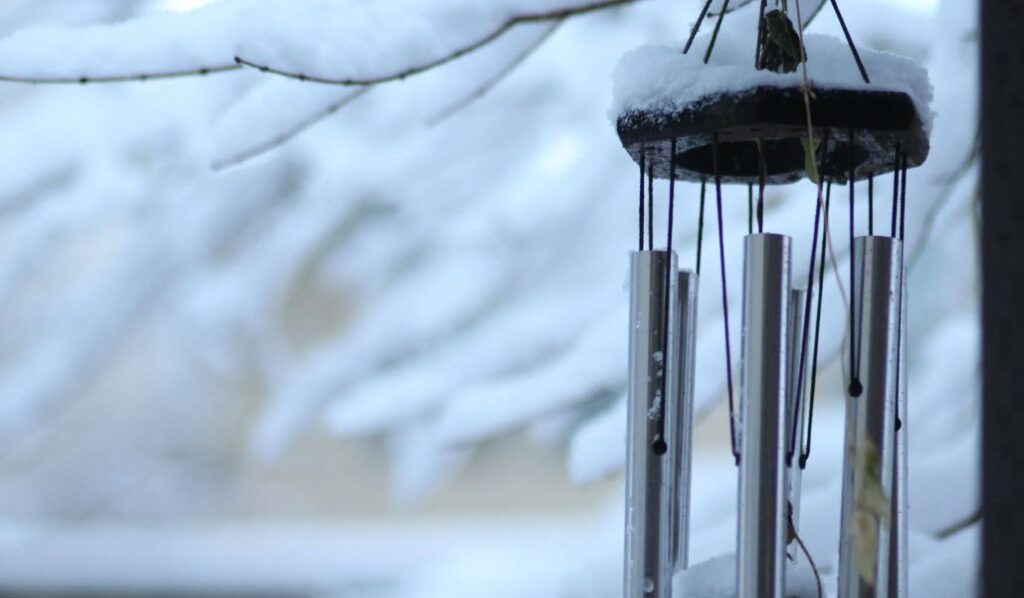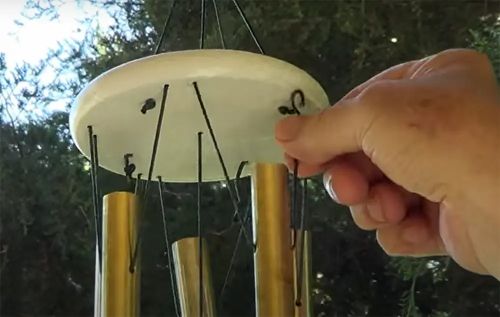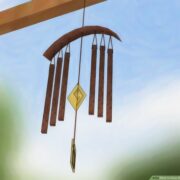Gardeners and outdoor enthusiasts often wonder if they should remove their wind chimes as winter approaches.
These delicate and melodic decorations enhance gardens with their sound, turning even a slight breeze into a musical experience.
The winter season raises concerns about whether to store wind chimes or leave them out to continue their melody and whether restringing is necessary if they are damaged.
However, the winter season prompts the need to decide whether to store them or let them continue providing melody.
For those needing repair, learn how to re-string a wind chime if the weather affects you.
We will examine all arguments for and against removing wind chimes during winter.
Focused on preserving your wind chimes, we will outline the conditions that might cause them to deteriorate, helping you decide whether to remove them.
Arguments: Windchimes Be Taken Down in The Winter
One of the best attractions you can select for your lovely home is windchimes, which, with their musical symphony, calm the environment.
However, people have long debated whether they should leave their wind chimes out during the winters or remove them to protect them from the harsh conditions.
They consider various factors for the same.
Arguments in Favor

- Protecting their structural integrity is one of the core justifications for removing wind chimes in winter. The fragile parts of the wind chime can be put under excessive stress by the harsh weather during winters, which includes lower temperatures, snow, and more.
- There can be structural damage, especially to the glass or ceramic wind chimes, as they may rust, break, or crack. Thus, it is believed that to prevent such conditions, wind chimes should be removed during winter.
- People who argue for removing windchimes also make an aesthetic case. When gardens are dormant in the winter, the visual emphasis turns to the natural hardscapes and other elements of the season. Windchimes, when left out, may appear out of place here.
- This may not balance with the aesthetic palette of winter, so storing it during this season and taking it out in the spring can help the windchime regain its glory.
Arguments in Against

- Those who believe that windchimes must be kept outside even during winter contend that even in the dead of winter, the calming tone of windchimes may instill a sense of peace. Due to less wind activity, certain chimes may sound more muffled, while those of heavier material may have a deeper tone.
- The harsh winter season is also quiet, and you barely hear sounds, so this could create a soothing and peaceful environment against the serene backdrop of winter.
- In this discussion, individual preferences significantly influence the outcome. Windchimes are treasured presents for some, and they are of personal importance to many. It may be a link to some old, special memories, and thus, you might want to keep it in front of your eyes for the whole year.
So What is to Be Done?
Well, the emotional aspects of your windchime, if any, are all your concerns, and if you, too, are emotionally attached to it in any way, then you can keep it out all year.
However, we are here to discuss the situation’s practicality, and so we will give you related suggestions.
If you live in a quiet and not very harsh winter with strong winds and aggressive snowfall, then leaving your windchimes out should be no problem.
However, if the conditions are extreme and you feel that the weather might destroy your windchime, it is better to keep it inside and save it for protection.
How Do You Take Care of Windchimes?

Windchimes are delicate and prone to breakage, so they must be handled with proper care.
- It would be best to clean your windchimes frequently to eliminate debris, dust, and other buildup. You may use a soft cloth or a gentle brush to clean it, but be careful not to break any sensitive part.
- Ensure that your windchimes are perfectly wired and inspected for wear and tear. Tighten all the loose strings or look for rust, as it would destroy it.
- Protect them from extreme weather conditions, such as harsh winters, strong winds, too much heat, etc. Windchimes made of metal can rust, and those made of ceramic or glass may even break or get scratched, so keep them safe from the environment.
- Take the time to fix or replace any damaged or broken components of your windchime, whether it requires restringing, changing tubes, or anything else. Also, you may want to tune them properly if they do not make the appropriate sound. Carefully adjust all these parts.
Wrapping Up
It’s all up to you whether you wish to keep the windchime out during winter or store it during extreme weather.
You can make up your decision by considering the aspects we discussed above. You may want to consider various aesthetic and sentimental reasons for that.
If you decide to keep it out for the year, you should also look for ways to protect its integrity.
If you are planning to take it out, you must store it properly and safely in a box or other container.
When it comes to the sentiments attached to it, first, keep it protected and safe, listen to the musical sound of it all the time, and feel the calming effect.














Comments